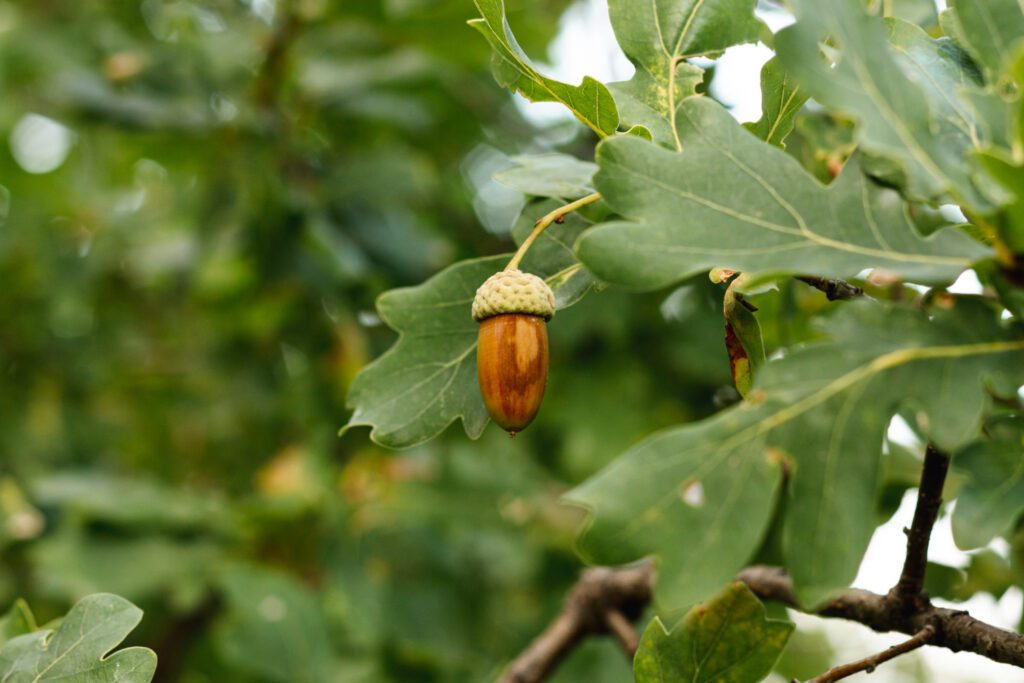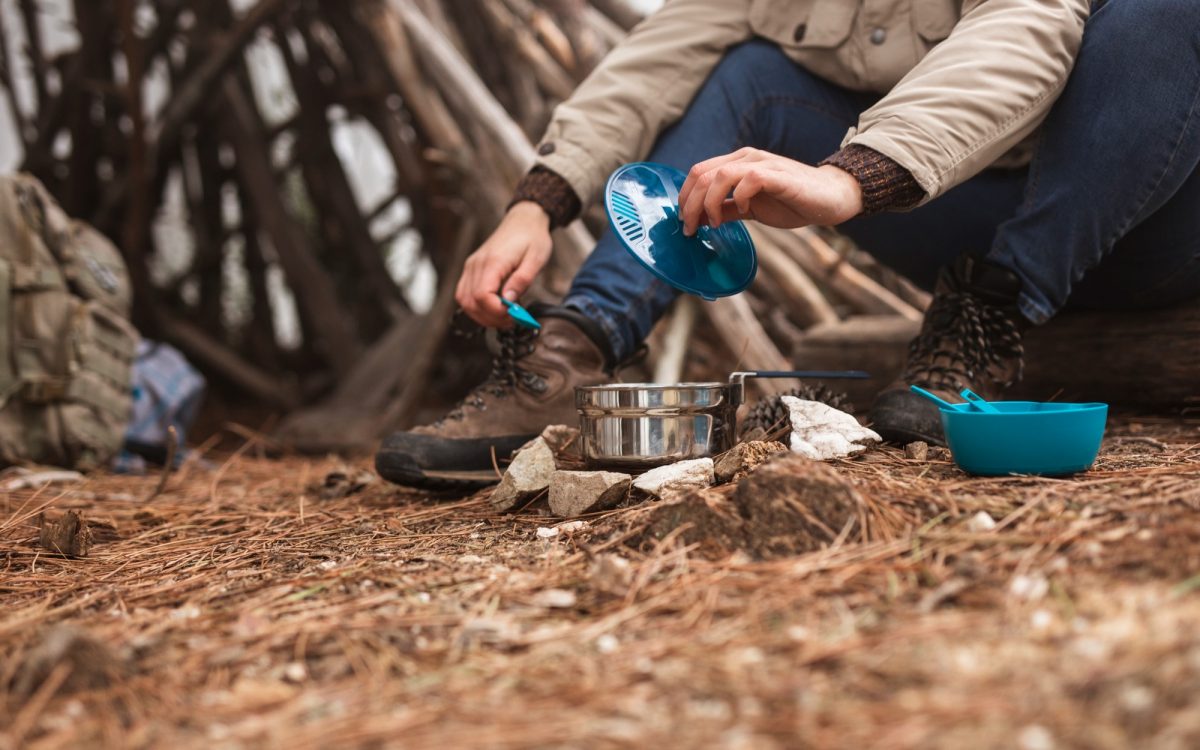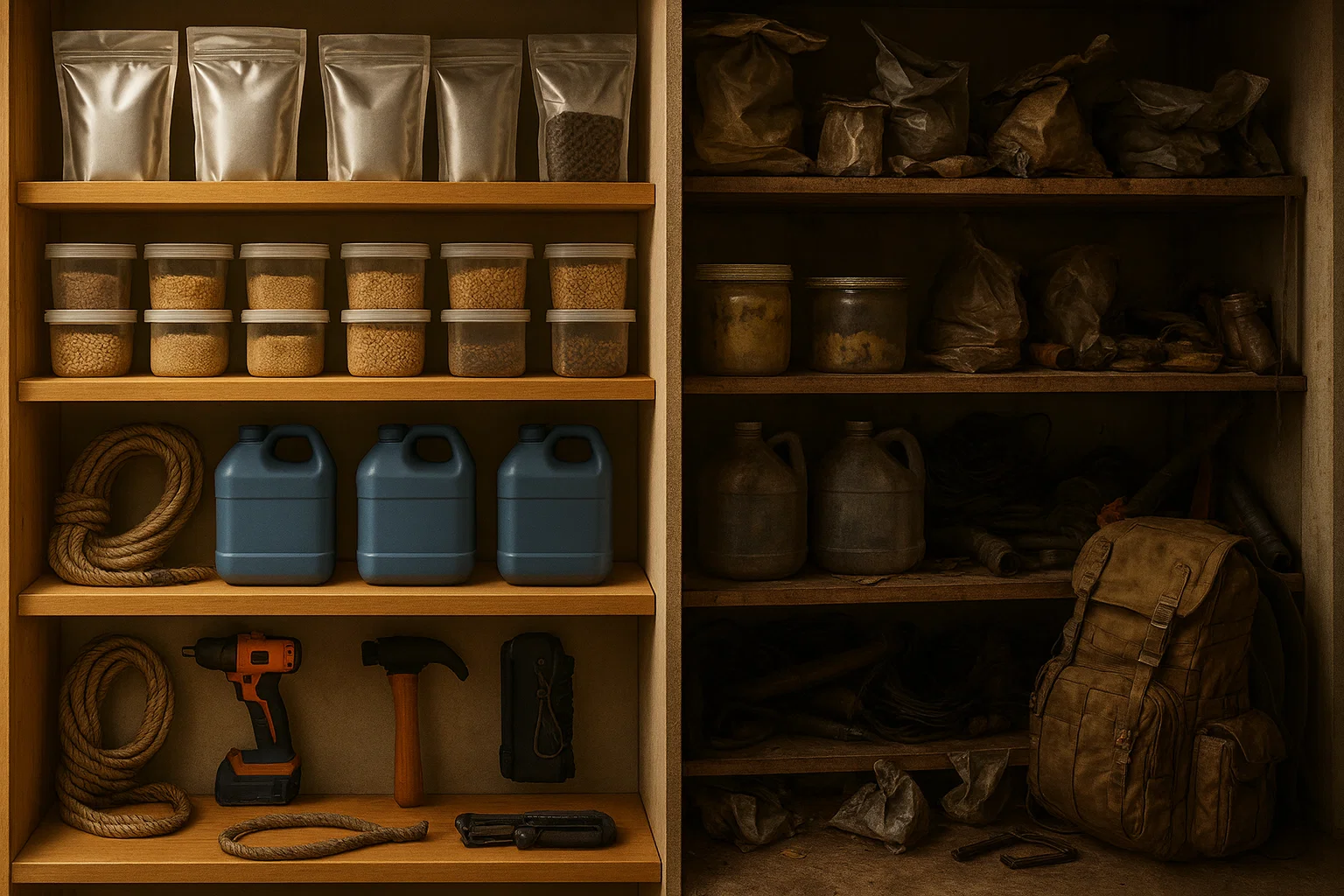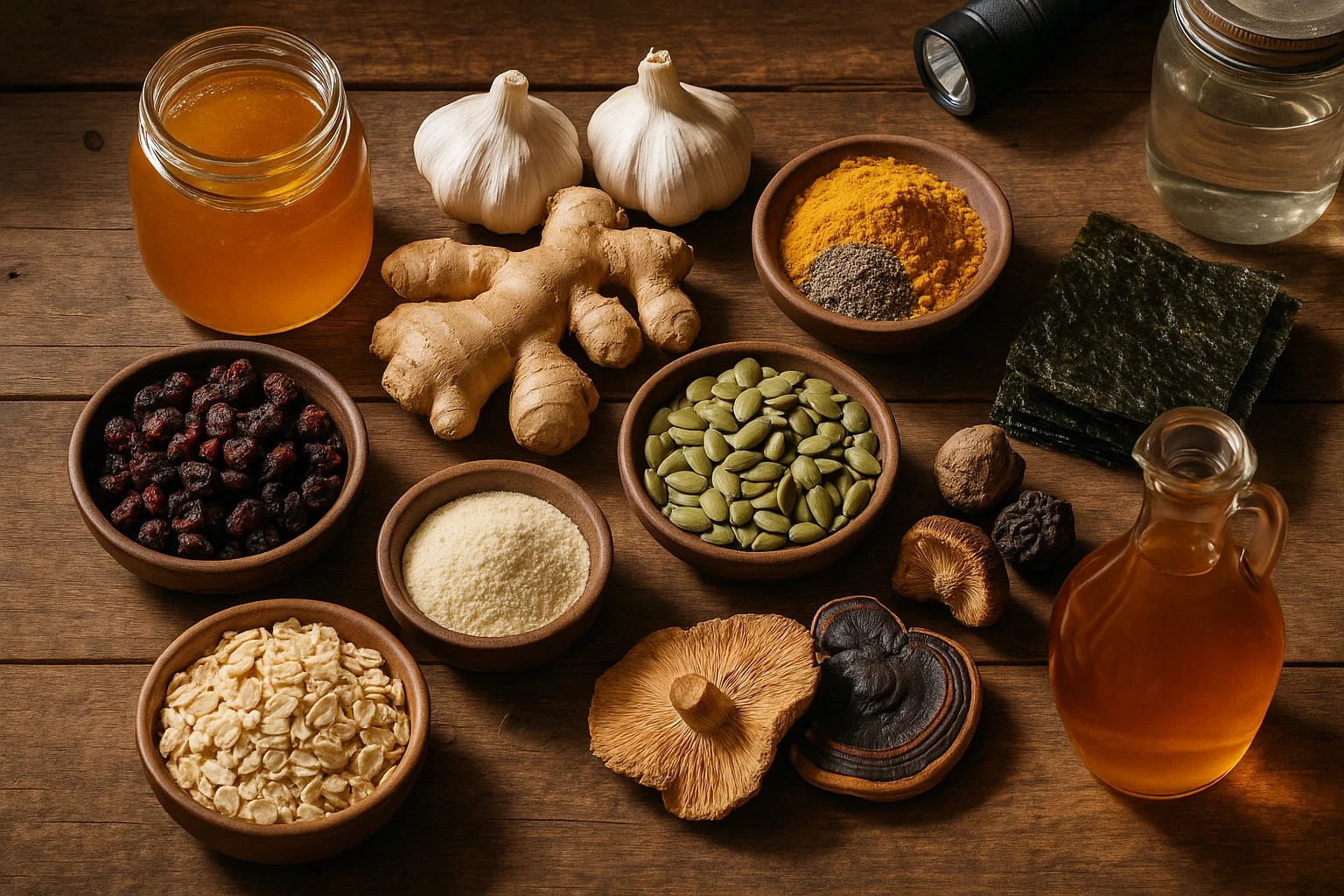There’s something amazing about heading out into the wilderness with nothing but your necessities and knowing you can make a meal from the soil. Backwoods cooking is about more than just survival; it’s about connected with nature, gaining resilience, and relishing the pleasure of producing a delicious meal from the plants, nuts, and berries that surround you. If you appreciate the outdoors or are a prepper trying to enhance your skills, cooking with wild ingredients wil l be both practical and rewarding.
You can still prepare a meal that will not only satisfy your hunger but also make you feel better when you’re out and about, far from supermarkets, refrigerators, and takeaway options. I’ll show you how to make three robust meals that make use of the ingredients found in the American wilderness: a sweet berry crumble, filling acorn pancakes, and a warming wild green soup. Let’s get started and transform your surroundings into a well-stocked pantry.
Getting Started
Making the most of what you have is the key to backwoods cookery. It is a skill that blends patience, knowledge, and flexibility. In the modern world, we’re accustomed to having everything at our fingertips, but in the natural world, things are different. Making the most of your surroundings while staying safe and considerate of the land will be necessary.
Before we go into the recipes, here are some things to know if you’re new to this:
First, information is essential. Although the outdoors is kind, if you’re not careful, it may be harsh. It’s crucial to recognize berries, nuts, and plants that are edible. You should always double-check and, if you can, bring a field guide to help you identify deadly lookalikes of some plants. Nature is a partner, not simply a resource, so only take what you need and remember to leave enough for these plants to continue growing.
Second, pack a few essentials to make backcountry cooking easy. A good, sharp knife is necessary. You’ll also need a small pot or pan that is both strong and lightweight enough to be portable. And, of course, a way to start a consistent fire, a ferro rod or waterproof matches will do the trick. With these fundamentals, you’ll be able to cook almost anything.
Wild Green Soup
You’ve set up camp, your fire is crackling, and as the day fades into dusk, you crave something warm and nourishing. Wild green soup is the ideal choice. It is high in vitamins and minerals and is produced from greens that you can generally find growing around you, such as stinging nettle, dandelion greens, and chickweed. This soup is simple to prepare and tastes delicious on a cool evening in the woods.
Get a big handful of wild greens first. You’re in luck if you live near stinging nettle, chickweed, or dandelion. These greens are easy to recognize and high in nutrients. Although stinging nettle has a somewhat negative reputation, boiling eliminates this and makes it completely safe to consume. Don’t forget to wash all the greens to remove any dirt or insects.
Take your survival skills to the next level by learning to build a wilderness shelter.
Bring two to three cups of water to a boil in your pot over a steady burner. Dice several wild garlic cloves or a wild onion while the water is heating. These give the soup depth and perfume, resulting in a tasty and cozy basis. After the water reaches a boil, add the garlic or onion and simmer for around five minutes.
Add the wild greens when the base is ready. Put them in the pot and cook until they are soft, about 5 to 7 minutes. The greens will begin to soften and the scent will begin to permeate the air. Chop some wild mushrooms and add them if you’re fortunate enough to find them; they offer a deep, earthy flavor. If you have salt, use a little to bring out the flavors.
Pour a bowl for yourself and enjoy the flavor. The earthy, grounding flavor of this wild green soup fills you up and helps you connect with the surrounding environment.
Foraging Tips
Stinging nettles are very nutritious, but handle them with caution because they can hurt until boiling. Dandelion greens are easy to find and lend a little bitterness that complements soups beautifully. Chickweed is also mild in flavor, making it a versatile wild food alternative.
Acorn Pancakes
Let us now discuss acorns, the secret weapon of a true survivalist. Because of their high calorie and nutritional content, acorns provide a satisfying supper. However, because raw acorns contain tannins that make them bitter, they require some processing. After the tannins have been removed, you are left with a nutty flour that is ideal for pancakes.

Now let’s talk about acorns, a true survivalist’s secret weapon. Acorns are high in calories and nutrients, making them ideal for a satisfying supper. However, fresh acorns require some treatment because they are bitter due to tannins. After you’ve leached off the tannins, you’ll have a nutty flour ideal for pancakes.
Make a batter by mixing one cup of acorn flour with water in a small bowl. Add an egg if you have one on hand to help bind the mixture and add a little lift to the pancakes. The batter should be pourable but yet thick enough to hold together.
Place a skillet over a fire and, if you have it, add a little amount of oil or animal fat. Press a dollop of batter into the skillet to create a little pancake. Cook until golden brown, about 2 to 3 minutes per side.
For an added natural sweetness, crumble some wild berries over the pancakes if you’re fortunate enough to come across them. These acorn pancakes are filling, substantial, and provide enough energy to sustain you during a day of trekking or camp work.
In the fall, look for mature acorns and avoid any with holes or signs of pests. The leaching process may appear to be a pain, but once completed, you will obtain flour that stores well and has a nutty, nutritious flavor.
Berry Crumble
After a hard day outside, sometimes all you need is a sweet, soothing treat. A berry crumble made with wild berries and crushed nuts or seeds is delicious. Blackberries, raspberries, and blueberries are frequently available in the late summer and early fall, making this dessert an ideal way to conclude a lunch in the woods.
To begin, collect around one cup of wild berries. Rinse them carefully to get rid of any dirt. In a small saucepan, place the berries and place it over the fire. The berries will release their juices while they cook, releasing a delicious perfume into the air.
To counterbalance the sweetness of the berries and provide texture, scatter crushed nuts or seeds on top once they have softened. For added taste and a little color boost, add any edible flowers you’ve found, such as violets or a branch of wild mint. To give the crumble that ideal crunch, heat it for a few more minutes to allow the nuts to roast a little.
Before digging in, take the crumble off of the heat and allow it to cool a little. Warm berries and crunchy nuts make for a really fulfilling combo. Even when it seems like you’re far from society, this sweet reward serves as a reminder of the bounty that the nature has to offer.
Pick only fully matured berries, as unripe berries may be slightly poisonous or sour. Additionally, always verify your identity because some lookalikes might be dangerous.
The Art of Backwoods Cooking
Backwoods cooking is a way of thinking, not merely a way of preparing food. You may connect with the earth and generations of people who have depended on it by cooking with wild ingredients, which awakens old survival abilities. Every component you use has a backstory, whether it’s the sun-ripened berry bush, the slow-growing oak tree that yields acorns in the fall, or the tenacious dandelion that pushes up through the ground.
When you begin cooking with wild products, you become more aware of things you may have previously overlooked. The pungent odor of wild garlic, the way pine needles appear fresh and tender, or the surprise flavor of nettle leaves after boiling. These subtleties give you a new respect for your surroundings, and each meal becomes part of your adventure through the woods.
You will also be developing your talents as you prepare these recipes. Acorn pancakes provide you with the energy you need for the day, wild green soup nourishes your body with fresh greens, and berry crumble adds sweetness and serves as a reminder that even in the woods, there’s always room for a pleasure. The plants, roots, and herbs you encounter along the journey might even inspire you to try more of them.
Cooking in the backcountry is a celebration of independence and simplicity rather than just a survival skill. Every meal you make using wild ingredients brings you one step closer to comprehending the cycles of nature and one step away from contemporary conveniences. Slowing down, gathering, creating, and savoring are all important.
You are connecting to something timeless and primordial whether you are warming up with wild green soup, cooking acorn pancakes over an open flame, or indulging in the sweet delights of a berry crumble. When we learn to make do with what nature provides, these meals serve as more than simply food; they serve as a reminder of how little we actually need. One delicious taste at a time, wilderness cooking has the power to bring you back to the present.






















